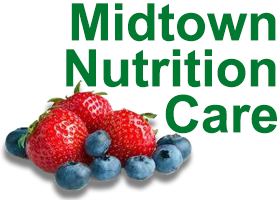HEALTHY EATING FOR ADULTS OVER 50
For adults over 50, the benefits of healthy eating include good mental capacity, resistance to illness, good energy levels, and better management of chronic health problems. Eating well is also a factor to a positive outlook.
HOW DOES DIET AFFECT US AS WE AGE?
Good nutrition keeps muscles, bones, organs, and other body parts strong over time. Eating vitamin-rich foods reduces the risks of heart disease, stroke, high blood pressure, diabetes, bone loss, cancer and anemia. Also, healthy eating means eating lower calorie, more nutrient-dense foods, which helps maintain a healthy weight.
HOW MUCH SHOULD YOU EAT?
How much you eat depends on how active you are. If you eat more calories than your body uses, you gain weight. Eating an extra 100 calories per day can lead to gaining one pound each month, or 12 lbs over the year. As we age, a gradual addition of pounds can aggravate health and/or mobility issues.
HOW MANY CALORIES DO YOU NEED?
For Women: if not physically active–approximately 1600 calories/day; somewhat active–approximately 1800 calories/day; active–approximately 2100 calories/day.
For Men: if not physically active–approximately 2000 calories/day; somewhat active–approximately 2300 calories/day; active–approximately 2600 calories/day.
WHAT ARE SOME KEY NUTRIENTS IN A HEALTHY DIET?
Water–As we age dehydration may become a problem because our bodies lose some of the ability to regulate fluid levels and our sense of thirst may not be as sharp. Try to sip water throughout the day and with meals to stay hydrated and avoid urinary tract infections and constipation.
Vitamin B-12–After 50, your stomach produces less gastric acid making it difficult to absorb vitamin B-12–needed to keep our blood and nerves vital. The recommended daily intake is 2.4 mcg. This amount can be consumed in fortified foods or a vitamin supplement.
Vitamin D–We get most of our vitamin D through sun exposure and certain foods (fatty fish, egg yolk, and fortified milk). As we age, our skin becomes less efficient at synthesizing vitamin D. You may need to supplement your diet with fortified foods or a multivitamin, especially if you have limited sun exposure.
HOW CAN I GET MOST OF THE NUTRIENTS I NEED?
The USDA Food Patterns suggests that people 50 or older choose healthy foods every day from the following:
Fruits: 1.5 to 2.5 cups/day
Vegetables: 2 to 3.5 cups/day
Grains: 5 to 10 ounces/day
Protein food: 5 to 7 ounces/day
Dairy food: 3 cups of fat free or low-fat milk/day
Oil: 5 to 8 teaspoons/day
